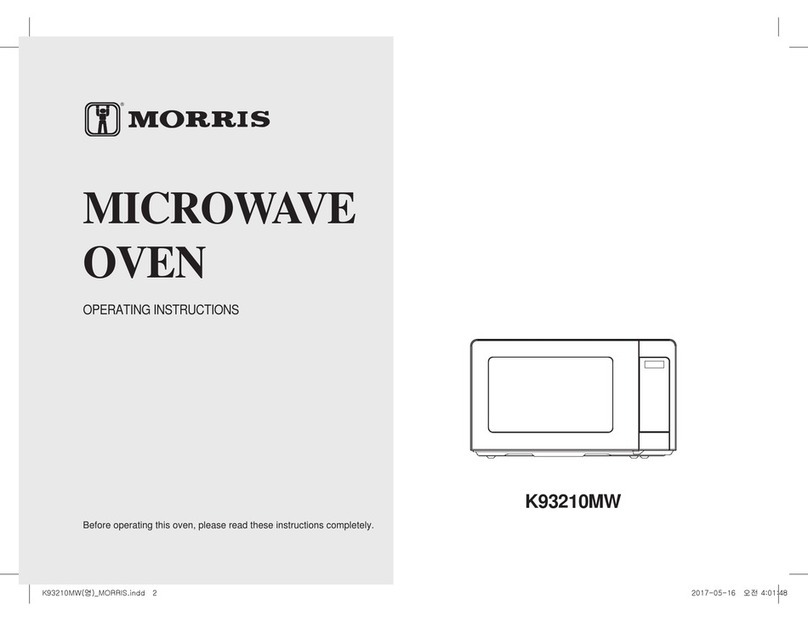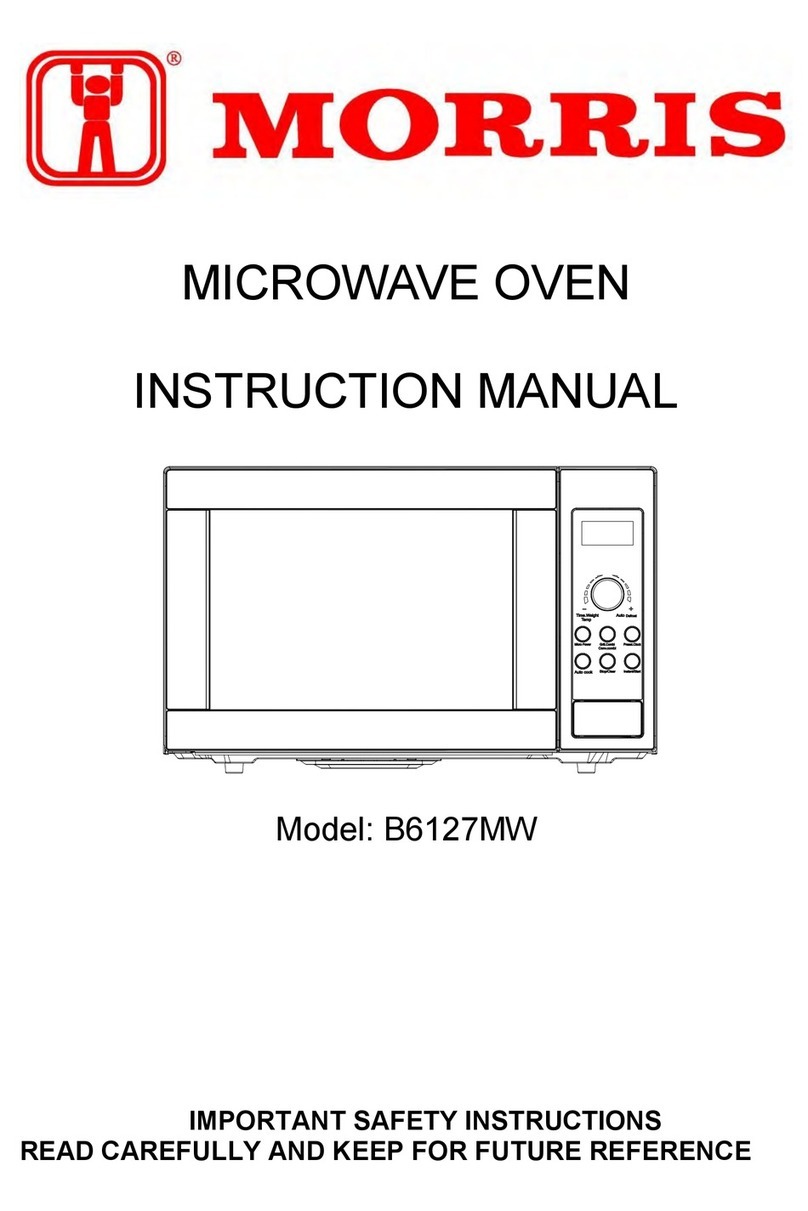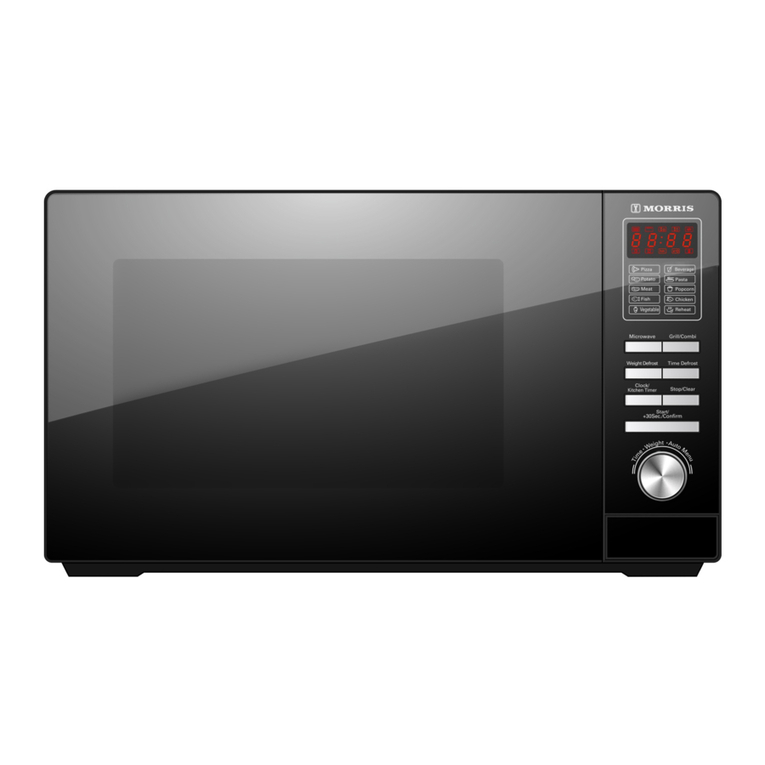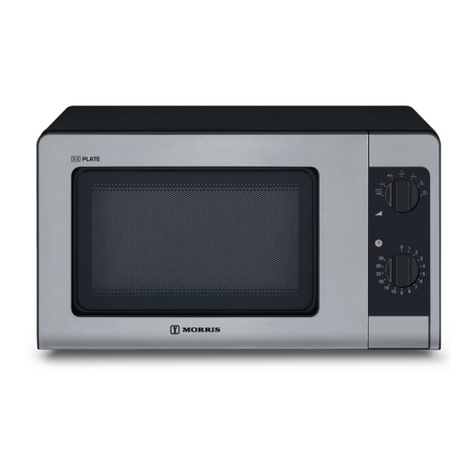
Q
9
UESTIONS AND ANSWERS
* Q :I accidentally ran my microwave oven
without any food in it. Is it damaged?
* A : Running the oven empty for a short time will
not damage the oven. However, it is not
recommended.
* Q :Can the oven be used with the glass tray
or roller guide removed?
* A : No. Both the glass tray and roller guide must
always be used in the oven before cooking.
* Q :Can I open the door when the oven is
operating?
* A : The door can be opened anytime during the
cooking operation. Then microwave energy
will be instantly switched off and the time
setting will maintain until the door is closed.
* Q :Why do I have moisture in my microwave
oven after cooking?
* A : The moisture on the side of your microwave
oven is normal. It is caused by steam from
cooking food hitting the cool oven surface.
* Q :Does microwave energy pass through the
viewing screen in the door?
* A : No. The metal screen bounces back the
energy to the oven cavity. The holes are
made to allow light to pass through. They do
not let microwave energy pass through.
* Q :Why do eggs sometimes pop?
* A : When baking or poaching eggs, the yolk
may pop due to steam build-up inside the
yolk membrane. To prevent this, simply
pierce the yolk with a toothpick before
cooking. Never cook eggs without piercing
their shells.
* Q :Why this standing time recommended
after the cooking operation has been
completed?
* A : Standing time is very important.
With microwave cooking, the heat is in the
food, not in the oven. Many foods build up
enough internal heat to allow the cooking
process to continue, even after the food is
removed from the oven. Standing time for
joints of meat, large vegetables and cakes is
to allow the inside to cook completely,
without overcooking the outside.
* Q :What does “standing time” mean?
* A : “Standing time” means that food should be
removed from the oven and covered for
additional time to allow it to finish cooking.
This frees the oven for other cooking.
* Q :Why does my oven not always cook as
fast as the microwave cooking guide
says?
* A : Check your cooking guide again, to make
sure you’ve followed directions exactly ; and
to see what might cause variations in
cooking time. Cooking guide times and heat
settings are suggestions, to help prevent
over-cooking... the most common problem in
getting used to a microwave oven.
Variations in the size, shape and weights
and dimensions could require longer cooking
time. Use your own judgement along with
the cooking guide suggestions to check
whether the food has been properly cooked
just as you would do with a conventional
cooker.
* Q :Will the microwave oven be damaged if it
operates while empty?
* A : Yes. Never run it empty.
* Q : Can I operate my microwave oven
without the turntable or turn the turntable
over to hold a large dish?
* A : No. If you remove or turn over the turntable,
you will get poor cooking results. Dishes
used in your oven must fit on the turntable.
* Q : Is it normal for the turntable to turn in
either direction?
* A : Yes. The turntable rotates clockwise or
counterclockwise, depending on the rotation
of the motor when the cooking cycle begins.
* Q : Can I pop popcorn in my microwave
oven? How do I get the best results?
* A : Yes. Pop packaged microwave popcorn
following manufacture’s guidelines. Do not
use regular paper bags. Use the “listening
test” by stopping the oven as soon as the
popping slows to a “pop” every 1 or 2
seconds. Do not repop unpopped kernels.
Do not pop popcorn in glass cookware.
































